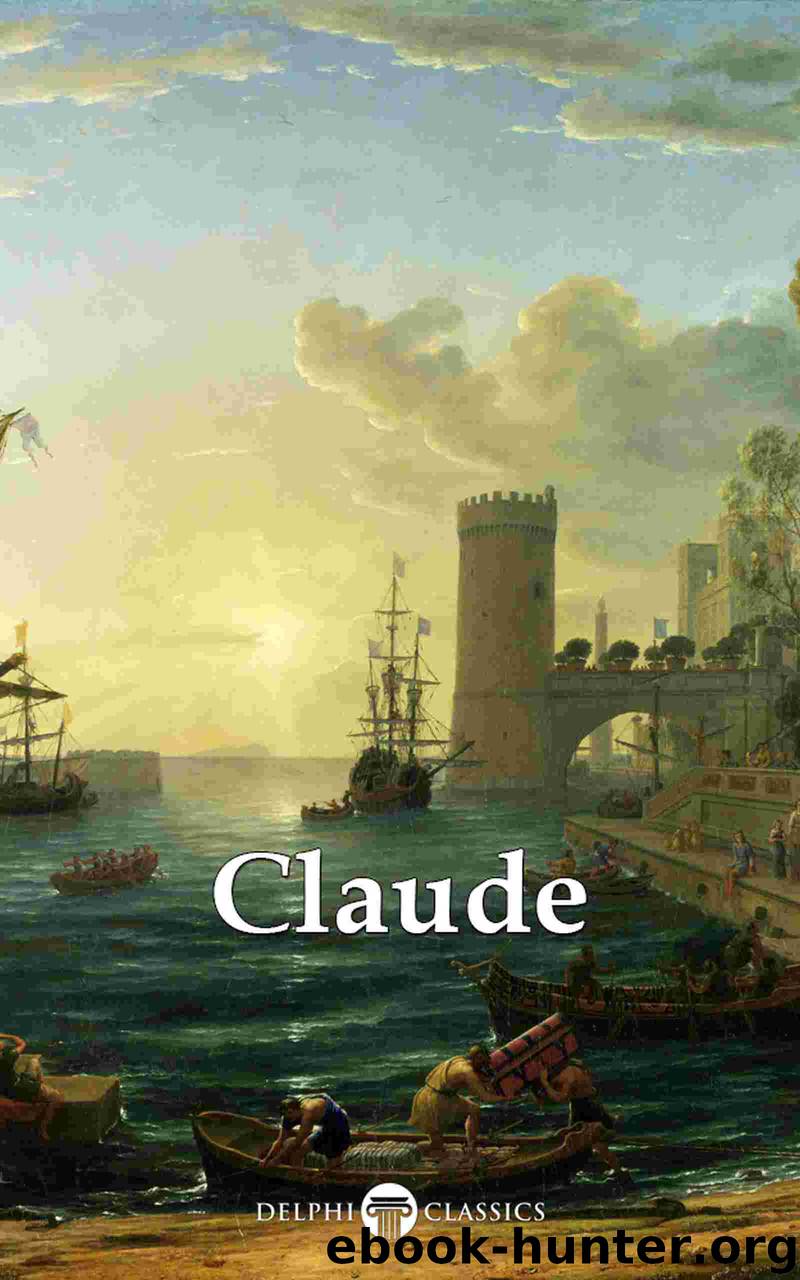Masters of Art - Claude Lorrain by Gellée Lorrain Claude & Russell Peter

Author:Gellée Lorrain , Claude & Russell, Peter
Language: eng
Format: epub
Tags: Art History
Publisher: Delphi Classics
Published: 2017-02-26T16:00:00+00:00
Claude’s reputation was not limited to Rome. Orders soon began to come to him from beyond the Alps. As early as 1644 we find him painting a picture for England, the exquisite little landscape, introducing the fable of Echo and Narcissus, which now hangs in the National Gallery. Many of his works at this period were executed, as the Liber Veritatis shows, pour Paris, or for French patrons. Amongst them was
M. Passart, the maître des comptes, who was also the patron of Nicolas Poussin. For this amateur Claude painted two fine landscapes, one (L. V. 79) now in the museum at Grenoble, the other (Z,. V. 89) at Windsor. Both represent views of Tivoli, and are remarkable as being direct renderings of actual scenes rather than classical compositions.
These French commissions were doubtless due in part to the recommendations of M. de Béthune, but it would seem that Claude was in a certain measure indebted to a young fellow-countryman, Jean Nocret. This artist, a native of Nancy, went to Italy to finish his art studies and was employed in Rome from 1643 to 1644 in making copies for M. de Chantelou, the patron of Nicolas Poussin. We find Nocret in the following year settled in Paris with an appointment at court and in enjoyment of the royal patronage. A few years later Claude sent him a little landscape ( L. V. 97) with figures of St. John and two angels in the foreground, now in the possession of Lord Methuen. It is painted on copper and bears the following inscription: —
A Monsieur Nocre paintre [du roy] a Paris faict par moy Claude Gellée lorain lano 1647 Roma pour le faveur que iay receut.”
In 1644 Claude lost his two most influential patrons, Cardinal Bentivoglio and Urban VIII., who died within a few months of each other. The conclave held in the same year resulted in the election of Cardinal Giambattista Pamfili, who now assumed the tiara under the title of Innocent X. The new Pope, although partly indebted to the Barberini faction for his election, held political views entirely opposed to those of his predecessor. Under Urban French influence had been predominant, under Innocent Spain and the house of Austria regained their former ascendency. The members of the Barberini family, accused of having perverted justice, appropriated benefices, embezzled public money, were driven, one after another, to seek refuge beyond the Alps. Their palaces were seized, their offices bestowed on others, their revenues confiscated.
These changes do not appear to have affected Claude prejudicially. On the contrary he gained by them a new patron in the person of the Pope’s nephew, Prince Camillo Pamfili, son of the notorious Donna Olympia Maidalchina, the widowed sister-in-law of the Pontiff. Camillo had been made a cardinal by his uncle, but threw aside the purple to marry the beautiful Olympia Aldobrandina, the richest heiress in Rome. For Camillo statecraft had no attractions. Leaving his wife and mother to struggle for supremacy, he devoted himself to a life of pleasure and to the collection of works of art.
Download
This site does not store any files on its server. We only index and link to content provided by other sites. Please contact the content providers to delete copyright contents if any and email us, we'll remove relevant links or contents immediately.
Ancient Worlds by Michael Scott(2626)
Savage Harvest by Carl Hoffman(1914)
The Monuments Men by Robert M. Edsel(1742)
Cain by Jose Saramago(1499)
The Apogee - Byzantium 02 by John Julius Norwich(1412)
A History of the World in 100 Objects by MacGregor Neil(1314)
The O. Henry Prize Stories 2014 by Laura Furman(1209)
The Unfinished Palazzo by Judith Mackrell(1144)
The Swerve by Greenblatt Stephen(1124)
The Lost Secrets of Maya Technology by James A. O'Kon(1091)
50 Art Ideas You Really Need to Know by Susie Hodge(1054)
Joan Miró by Joan Miró(1034)
4 3 2 1 by Paul Auster(1023)
Cain by Saramago José(1018)
A Piece of the World by Christina Baker Kline(996)
Heretics and Heroes by Thomas Cahill(987)
The Book of Ruby(968)
Raising Hell: A Concise History of the Black Arts and Those Who Dared to Practice Them by Robert Masello(952)
1484244826 by Unknown(902)
